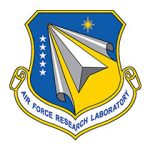Funding agency
 US Air Force Research Laboratory (AFRL)
US Air Force Research Laboratory (AFRL)
Award number
FA8750-15-1-0050Dates
January 1, 2015-September 30, 2016Description
Terahertz (THz)-band communication is an emerging technology that can address two relevant challenges for the U.S. Air Force. First, THz-band frequencies (0.1 to 10 THz) remain almost completely unutilized for communication; hence, being the first to exploit this band provides an unmatched technological advantage. Second, the huge transmission bandwidth associated with the THz-band can satisfy demand for higher data rates in communication networks, thereby enabling Terabit-per-second (Tbps) wireless links. The objective of this project is to establish the theoretical foundations for practical THz-band communication networks. Over the duration of the project (20 months), contributions have been made across different areas both related to THz device technologies as well as to physical and link layer solutions for THz communication networks. More specifically, in terms of THz devices, graphene-based plasmonic phase modulators and plasmonic nano-antenna arrays have been proposed, modeled and analyzed. In terms of physical and link layer solutions, new models for interference in THz communication, symbol detection and physical layer synchronization strategies; a packet size optimization framework; and link layer synchronization and medium access control protocols have been devised, formulated and modeled. These have also been validated by a combination of numerical, simulation and experimental results.
